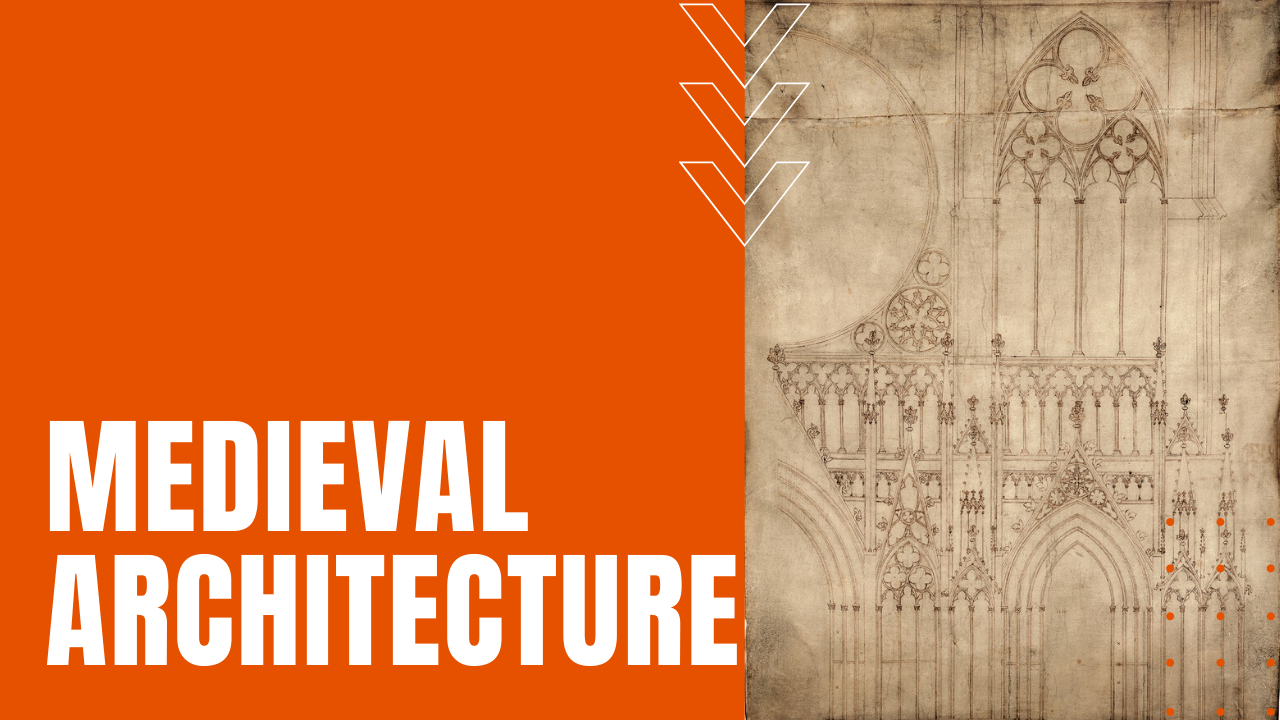Medieval Architecture: Pre-Romanesque, Romanesque, and Gothic

Primarily found in cathedrals, castles, fortifications and government buildings of the European Middle Ages, Medieval architecture is classified into Pre-Romanesque, Romanesque and Gothic styles. The medieval Latin Cross plan cathedral models itself along the lines of a Roman basilica, which consists of a nave, transepts and an altar positioned at a given cathedral’s east end, while medieval churches of the Byzantine style employed domes and Greek crosses resembling a plus sign.
Medieval Windows
Castles and fortified walls, on the other hand, employed narrow cross-shaped windows, which allowed a crossbowman to safely shoot enemies attempting to overpower fortifications, while rooftop battlements gave shelter to archers when not actively shooting at hostile invaders.
Remaining examples of medieval civic architecture include manor houses, town halls, almshouses for the poor and bridges, although many surviving residences from medieval Europe incorporate the distinctive features of the later Medieval period.
Romanesque Architecture
Pre-Romanesque Architecture developed a number of variations by region, including Merovingian architecture of the 6th century, Carolingian architecture of the 8th century, Ottonian architecture during Emperor Otto the Great’s reign in mid-10th century Germany and Asturian architecture from the 8th to early 10th centuries.
Romanesque or Anglo-Norman Architecture of the 11th and 12th centuries was named by modern academics for its similarities to earlier Roman Architecture, which employed the use of round or slightly pointed arches, barrel vaults, and cruciform piers. Broadly divided into two stages, the first stage lasted from 1070 to 1100 A.D., and can be seen in structures such as Durham Cathedral in Great Britain, while the later Romanesque styles became more detailed and ornamental, such as the much smaller Church of St. Mary and St. David in Kilpeck, England.
Medieval Gothic Architecture
Medieval Gothic style architecture can be seen in many surviving 11th- and 12th-century structures—particularly in cathedrals—which emphasized towering skeletal stone structures supported by external flying buttresses, pointed arches, ribbed stone vaults, clustered columns and sharply pointed spires, all of which allowed cathedrals to rise up taller than their predecessors.
Large expanses of stained glass windows depict stories from the Bible and the lives of saints, giving much of Europe today its lingering Old World ambience, while making Medieval Architecture a living testament to the evolving creativity of man.
